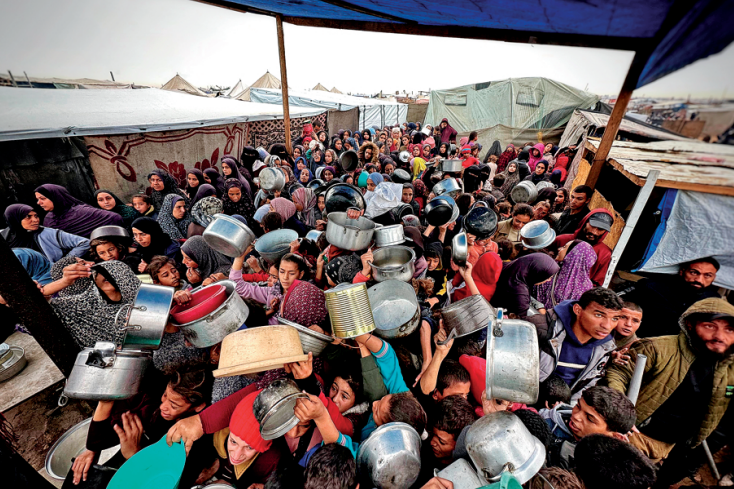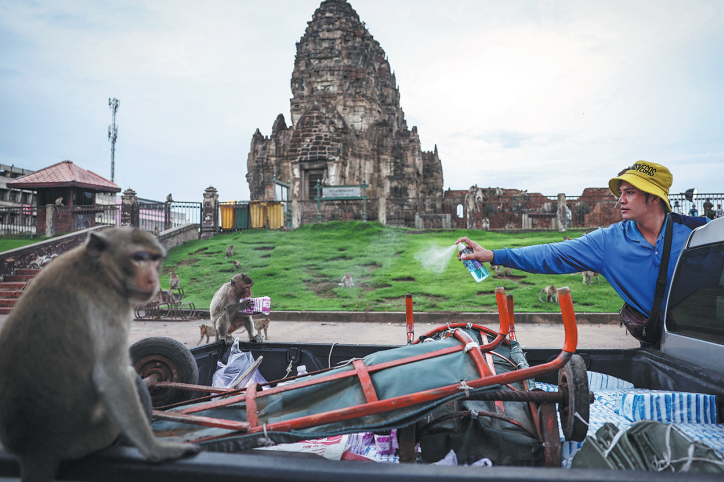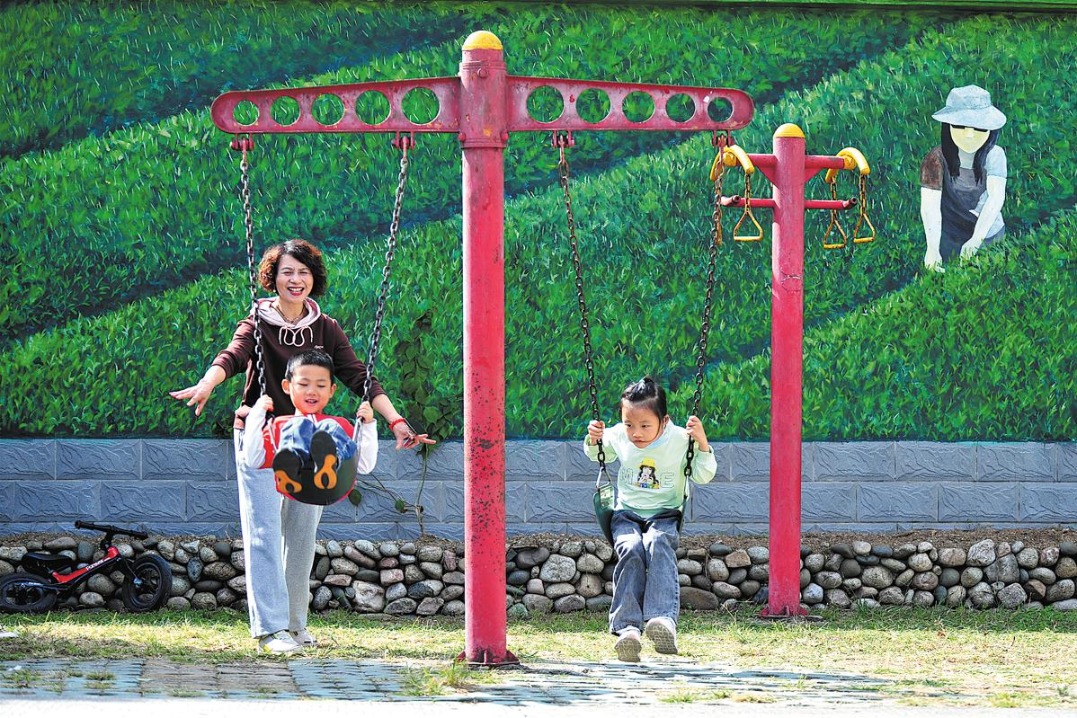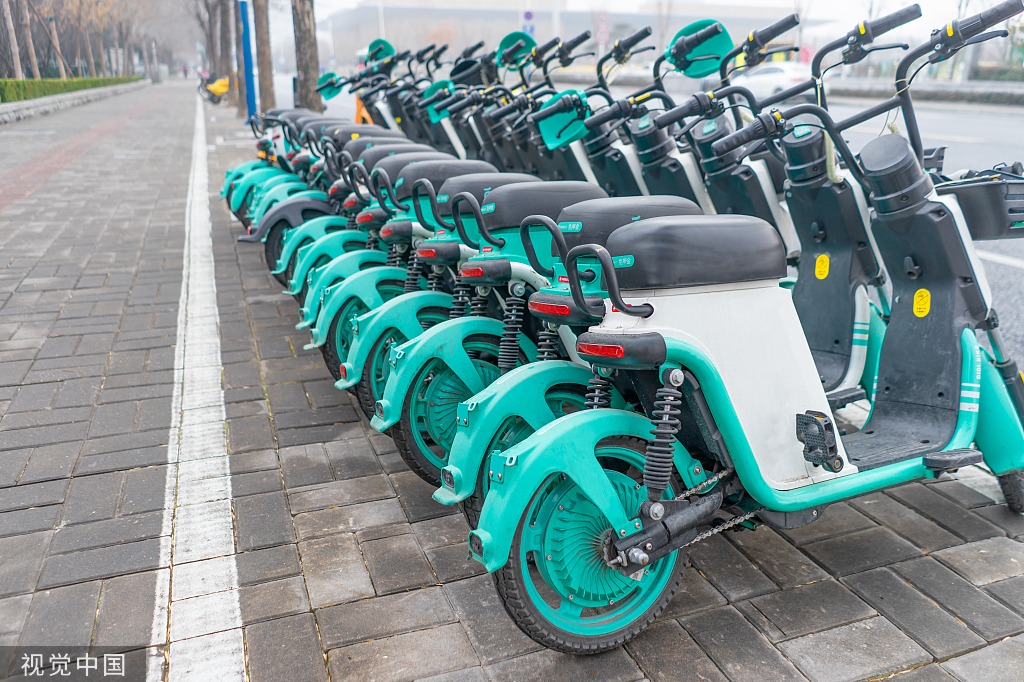How the National Archives of Publications and Culture open a window for the world to understand China?
Ecns.cn | Updated: 2023-05-08 11:06
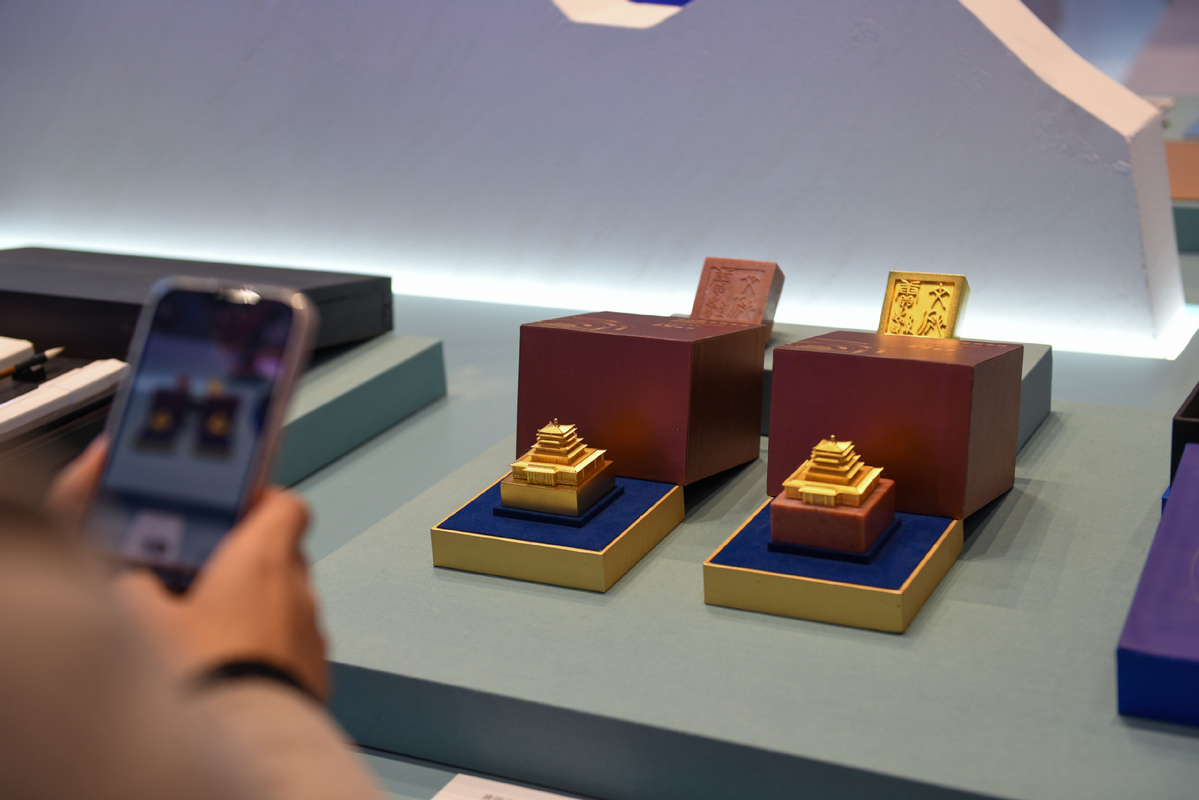
As the general database for bibliology resources and for seed gene bank Chinese culture, the National Archives of Publications and Culture has fulfilled its responsibilities of plan coordination, collection display, research and communication, and publicity and use of national bibliology resources since it opened on July 30th in 2022. The Central Archives (Wenhan Pavilion), Xi'an Branch Archives (Wenji Pavilion), Hangzhou Branch Archives (Wenrun Pavilion) and Guangzhou Branch Archives (Wenqin Pavilion) constitute a preservation system of "one headquarter and three branches."
The archives belong not only to China, but also to the world. How does they reflect exchange and mutual learning between China and foreign countries in their operation and exhibitions? As a cultural symbol of China in the new era, how do they open a window for the world to understand China, and for China to understand the world? Do foreign experts and scholars have opportunities to visit and exchange there? Liu Chengyong, secretary of the archives’ Party Committee and their director, explained in an interview with China News Service's "W. E. Talk" how they use "Chinese versions of bibliology resources." as a bridge to promote cultural exchanges and dialogues between civilizations.
Excerpts from the interview:
China News Service: Since ancient times, Chinese civilization has been renowned for its openness and inclusiveness. The 5,000-year history of its development is itself a process of promoting mutual integration. As the seed gene bank of Chinese culture, how does the idea of running the National Archives of Publications and Culture reflect this process?
Liu Chengyong: The Chinese nation has had a strong sense of cultural heritage and bibliology resources preservation since ancient times, and bibliology resources have made great contributions to the spread of Chinese civilization. Throughout the annals of history, the preservation and inheritance of bibliology resources. have always been placed in an important position in the inheritance of national context, and there are endless institutions of specialized collection. It is the Communist Party of China's consistent policy and advantage to attach importance to Chinese excellent traditional culture.
As a landmark cultural heritage project in the new era, the National Archives of Publications and Culture adheres to the mission of passing down Chinese culture, strengthening cultural self-confidence, displaying the image of a great country and promoting civilization dialogue.
On the one hand, it has inherited the tradition of preserving Chinese classics that has lasted for more than 2,000 years, focusing on the theme of "place Chinese culture seed in a famous mountain and hand it down to the next generation," and simultaneously plans and builds the Central Archive, the Xi'an Branch and the Hangzhou Branch. The main and branch archives are built on mountains – Yanshan Mountain in Beijing, Guifeng Mountain in the Qinling Mountains in Xi'an, Liangzhu in Hangzhou and Fenghuangshan in Guangzhou – to ensure the permanent and safe preservation of the Chinese bibliology resources.
On the other hand, starting from the strategic consideration of cultural security and national rejuvenation, and based on the panoramic perspective of Chinese civilization, Chinese history, and the inheritance and development of the Chinese nation, all kinds of bibliology resources of Chinese civilization, characters, symbols and contextual information at home and abroad are included in the scope of preservation. All kinds of versions that reflect the cultural exchanges and exchanges between China and foreign countries and the mutual learning of civilizations are also included, and foreign classic versions are collected through different categories and channels. At the same time, it is in line with the new concept of the current international GLAM [an acronym for galleries, libraries, archives and museums], and it is an innovative cultural project to build a comprehensive cultural venue that integrates a variety of venue functions and to demonstrate China's wisdom.
The archives' special exhibition system contains and embodies these ideas from curating and planning to implementation. The basic exhibition "Culture and Knowledge in Our Own Hands: An Exhibition of Ancient Chinese Civilization Bibliology" has two special units, "Unity and Multiplicity: Ancient Chinese National Culture in Bibliology" and "Beauty Represents Itself With Diversity and Integrity: Ancient Sino-Foreign Civilization Exchange in Bibliology." It displays the printed edition of the Liaodong Chronicles from the 16th year of Emperor Jiajing ,1537 of the Ming Dynasty; the Niuhu Copper, a bronze cultural relic from the Warring States Period [476 to 221 B.C.], and the classic ethnic minority cultural versions, such as Song Zhen Ge, a traditional narrative book of a Beijing ethnic group. And the rubbings of the epitaph of Jing Zhencheng, a Japanese envoy to the Tang Dynasty [618 to 907 A.D.], which confirmed the history of Sino-Japanese friendly exchanges, and the 1843 English edition of China, which contains 124 copperplate etched illustrations, and other precious editions that reflect the exchange and mutual learning between Chinese and foreign civilizations. At the same time, the exhibition of ancient books called "The Yuan Shuo Jin Lan: A Combination of Wenhan From the Complete Library in the Four Branches of Literature" is the first dispay of some genuine and simulated photocopied versions of Complete Library the in the Four Branches of Literature in the Wenyuan, Wensuge, Wenjinge and Wenlan pavilions. The special collection exhibition of Tibetan and Mongolian Tibetan Tripitaka block books shows these books in different national languages for the first time. These two special exhibitions have strengthened cultural confidence and cast a strong sense of the Chinese nation community with splendid, bright classical versions.
CNS: At present, there are six major exhibitions, two boutique exhibitions and five special exhibitions in the archives' central headquarters. What kind of exhibition ideas do these exhibitions reflect? How does "Light of Truth: An Exhibition of Classical Bibliology Resources in the Sinicization of Marxism and Modernization" reflect the "two combinations" from the beginning of curation?
Liu: In the important speech at the conference celebrating the centenary of the founding of the Communist Party of China, Secretary-General Xi Jinping emphasized that "the fundamental tenets of Marxism should be combined with China's reality and with China's classic traditional culture," which provided us with a fundamental follow-up for planning the exhibition. The National Archives of Publications and Culture adheres to the guidance of Xi Jinping Thought on Socialism With Chinese Characteristics for a New Era. It also demonstrates that our party combines the fundamental tenets of Marxism with the reality of China and its struggle and fruitful achievements in combination with classic Chinese traditional culture, and that it grasps the main theme of China's historical development and the evolution of Chinese civilization, and integrates the essence of classic Chinese traditional culture and the spirit of China and essence of the times into the exhibition work. The archives have formed, forming a political, ideological, historical and artistic unity including six fine works of art exhibitions, two fine works of art displays and five special exhibitions.
The thematic exhibition "Light of Truth" gathers the works, manuscripts, archives and other important versions of Marxist classical writers such as Marx and Engels, along with leaders of the Party and country, such as Mao Zedong, Deng Xiaoping, Jiang Zemin, Hu Jintao and Xi Jinping, showing the glorious history of Marxism's development, especially the modernization of Marxism in China. The basic exhibition "Culture and Knowledge in Our Own Hands" explains the historical origin, development process and basic trend of classic Chinese traditional culture through bibliology, and shows the unique creation, value concept and distinctive characteristics of Chinese culture. The basic bibliology resources exhibition "Witness the Great Career: An Exhibition of the Chinese Nation's Revival" will witness the glorious course of the Chinese nation's great rejuvenation through physical objects. The Special Bibliology Resources Exhibition, China Stamp Exhibition and China Currency Exhibition show bibliology resources from the Neolithic Age to modern times, and the development and changes of Chinese stamps and currencies in past dynasties. The two excellent exhibitions are set in the National Study and Wenhan Hall, where 30,000 excellent books are chosen in the National Study, and Wenhan Hall displays the original large-scale simulated photocopies, photocopies of ancient books and printed copies of original engravings, such as the Yongle Canon, the Complete Library in the Four Branches of Literature, China's Re-created Rare Books, etc. Five featured exhibitions, integrating exhibition and collection, display classic versions of ancient books, engraving, maps, posters, woodblock watermarks, etc., which are both representative and aesthetic. Wandering through the exhibition halls of the National Archives of Publications and Culture, we can feel the "light of truth" of Marxism; appreciate the prosperity of the Chinese nation's "culture and knowledge in our own hands"; witness the great path of the great rejuvenation of the Chinese nation; feel the historical evolution of edition culture and its achievements; and realize the long-lasting extension of Chinese civilization and the profoundness of Chinese culture.
As the thematic exhibition for the opening of the National Archives of Publications and Culture, "Light of Truth" focuses on comprehensively displaying the glorious course of Marxism in China in terms of content design. Throughout this process, the Communist Party of China absorbed all the outstanding achievements of human civilization with a broad mind and led the great practice with the scientific theory of the Sinicization of Marxism. It was also a process of combing the fundamental tenets of Marxism with China's reality and its classic traditional culture. "Light of Truth" includes three classical versions of Marxism in foreign languages; the second edition of the Marx-Engels Gesamtausgabe in Germany, and over 300 foreign versions of the Communist Manifesto. The exhibition also displayed the Communist Party of China Declaration "Why Is It That Red Political Power Can Exist in China" "Prolonged War (serial edition of the newspaper Daily Translation; the speech outline of "Emancipating the Mind, Seeking Truth from Facts, Uniting as One and Looking to the Future"), and the threadbound classic collection edition of Xi Jinping's "Governance of China" (Volumes 1 to 4), and other classic editions of Marxism in China. From the aspect of formal design, taking advantage of the spatial characteristics of the Wenhan Pavilion, the archives' core building, Archives of Publications and Culture, "Light of Truth" is set up in the first to third floor of Wenhan Pavilion, and the fourth unit, "Classic Edition of Xi Jinping Thought on Socialism with Chinese Characteristics for a New Era," is set up on the second floor of the exhibition hall, while the Wenhan Hall is equipped with a fine display of Chinese traditional cultural classics. In this landmark building with Chinese characteristics, the classic versions of Marxism and the classic Chinese traditional culture complement each other and achieve the best outcome, which is a vivid embodiment of adhering to the "two combinations."
CNS: Civilizations communicate because of diversity, learn from each other because of communication and develop because of mutual learning. As the cultural symbol of China in the new era, what considerations does the National Archives of Publications and Culture have in promoting dialogue among civilizations?
Liu: As a new window to display China's image, the National Archives of Publications and Culture shoulders the mission of passing on Chinese culture, strengthening cultural self-confidence, displaying the image of a great country, and promoting dialogue among civilizations. It will fully tap the features and advantages of editions; build a bridge for exchanges and mutual learning between China and foreign countries; and open another cultural window for the world to understand China and China to understand the world. The archives simultaneously adhere to the principle of "bringing in" and "going out"; increases investment in overseas Chinese edition resources and foreign excellent editions; and strive to promote the collection and research of precious overseas Chinese historical images and important documents. In line with the needs of overseas audiences, we will hold high-level international edition cultural activities; build brands for cultural exchanges and mutual learning activities between China and foreign countries, such as the Wenhan Forum, the China National Edition Pavilion's featured edition tour; and promote featured editions with rich cultural heritage, national wisdom and the style of the times, so as to highlight the unique charm of Chinese civilization. Through the International Book Fair and the Year of Chinese Culture, we will strengthen exchanges and cooperation with world-renowned libraries, museums and art galleries; establish bilateral and multilateral exchange and cooperation mechanisms; promote cultural exchanges and civilization dialogue; and help shape a credible, lovely and respectable image of China.
CNS: The important functions that the completed National Archives of Publications and Culture and its "one headquarters and three branches" will fully perform their own functions, include research and exchange, and they are also the exchange center of the Chinese bibliology resources. How can research exchanges, including academic and business exchanges between Chinese and foreign bibliology resources, be carried out? Do foreign experts and scholars who are interested in studying Chinese editions have opportunities to visit and exchange in the archives?
Liu: Developing edition research and communication is an important function of the National Archives of Publications and Culture, and it is also an important link that connects collection, exhibition, publicity, education and other work. On the basis of abundant bibliology resources, the archives will organize specialized and characteristic edition research.
On the whole, the goal is to implement the strategic plan of relevant documents, such as guidelines on stepping up the preservation and publication of ancient books; the Cultural Development Plan of the 14th Five-Year Plan; and the Development Plan of Philosophy and Social Sciences During the 14th Five-Year Plan. We will actively plan to set up major issues of edition research; gather domestic and foreign research forces in edition theory and practice; cooperate in research on basic, key and innovative issues of Chinese edition; promote the transformation and upgrading of Chinese edition research based on traditional culture; and establish it in line with the development requirements of the new era.
In the working mode, a bibliology resources research mechanism that combines unification with division, and a coordinated and innovative bibliology resources research mechanism is established. The Central Archive coordinates and promotes comprehensive, basic and applied research such as collection, collation, appraisal, evaluation, restoration and protection, and utilization of editions. The three branch archives are based on local resources and carry out practical research on the collation, development and innovation of edition culture with regional advantages, regional characteristics and local styles. In terms of use, we should speed up the establishment of the platform for open sharing, cooperation and exchange of editions; organize aa professional edition research team; set up an expert committee; set up professional journals; edit and publish the collection of excellent research series; build a practice base for production, study and research; promote the transformation and application of edition research results; and effectively apply and serve the national and local cultural development.
Experts and scholars from all over the world who are engaged in and have passion for edition research, especially Sinologists and young cultural emissaries, are welcome to come to the National Archives of Publications and Culture to exchange views and jointly carry out research on the frontier issues of editions and the comparison between Chinese and foreign editions. The archives will wholeheartedly provide convenience and services for experts and scholars from China and abroad.
Translated by Zhao Zheni





